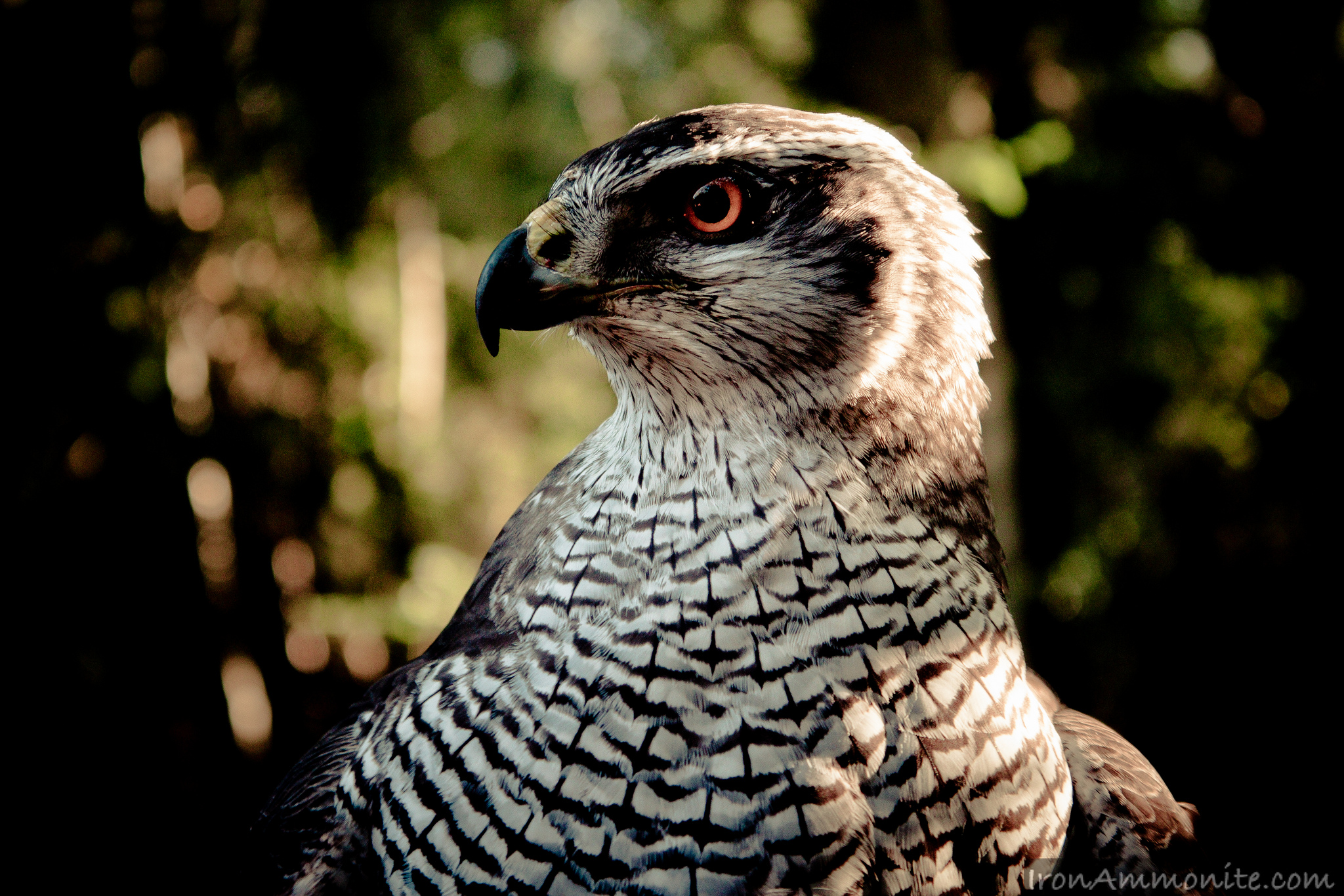 I knew something was wrong the moment I opened the orchard gate. My guinea fowl were squawking like crazy, buckwheat!, buckwheat!, and none of my two dozen or so chickens were anywhere in sight. I scanned the area around the poultry barn for signs of a predator, but saw nothing.
I knew something was wrong the moment I opened the orchard gate. My guinea fowl were squawking like crazy, buckwheat!, buckwheat!, and none of my two dozen or so chickens were anywhere in sight. I scanned the area around the poultry barn for signs of a predator, but saw nothing.
Until I reached the chicken house. As I entered the doorway to the chicken yard, which is secured by fencing wire on every side and overhead, I saw it — a young goshawk. It was inside the yard, having entered the same way that my chickens and guineas wander out during the day — through the open door.
Now I was standing in the doorway, blocking its exit and feeling rather pissed off. In another context, I would have been glowing with admiration for this beautiful bird. Instead, I was cursing. Between me and the goshawk lay a pile of guts and feathers — the remains of the chicken the hawk had been devouring until I came to interrupt the meal.
The goshawk was agitated. Hawks don’t like humans too near, and I was so close I could have grabbed it, if I’d dared. Which I didn’t, because holy crap this was one big bird, I suddenly realized as it thrashed its stout body against the fence trying to get out. I’m accustomed to catching Cooper’s Hawks mid-way through a meal of one of my free-range chickens, but this predator was bigger and more savage. I stepped out of the way to corral it toward the exit, and in an instant it was out the door, spreading its giant wings against the sky.
It’s been a rough few months at the Crag Crest Poultry Ranch. Since late January, I’ve lost five chickens to raptors. Since the carnage began, I’ve faced a dilemma. Do I keep my birds locked in their yard where they’re safe from harm or continue to allow them free range of the three acre area in our east orchard? The orchard fence mostly keeps out the foxes and bobcats, but birds of prey remain a constant threat. I rarely lose chickens in the summer. It’s winter and spring when the hawks most often swoop down and grab a meal from my barnyard. These are the same seasons when my chickens and other fowl most revel in a chance to nibble on seeds left over from last season or greenery poking up through the duff.
A friend and soon-to-be neighbor of mine is a falconer and told me that it’s possible the goshawk is nesting nearby. If that’s the case, I might need to find a way to make peace with it. I have no idea how to do that, but I’ll learn. Necessity makes a good teacher. Shortly after my encounter with the goshawk, I read a beautiful review of the book H is for Hawk, which chronicles Helen Macdonald’s attempt to train a goshawk, the “wildest of animals.” The book is on its way to my house as I speak. In the meantime, I’m allowing my chickens and guineas to graze during the midday hours while I keep watch on them through my office window. I’m determined to keep my chickens safe from harm, but it’s a cruel world out there, and I can’t blame the other creatures of my habitat for wanting to make a living in it.
Photo by Paul Williams via Flickr.
As much as I love birds, birds of any kind really , I still find the raptors a little too much to take sometimes when they try to do what I tell myself they are too beautiful and sweet to do….kill baby birds, ducklings, or steal eggs. I guess its the part of nature I cant do without seeing! Enjoyed the story, keep them coming <3
Invest in a lot of chicken wire. A 2″ mesh should keep out both Coops and gosses. As a hawk lover I thank you for not harming them.